Yesterday I published a comparison of the actual depth of field (DOF) observed with a Fuji 80 mm f/1.7 GF lens on a GFX 100S at f/2. If you haven’t read that, this post won’t make much sense, and I encourage you to at least skim it. In this post, I’m going to look at what happens at f/2.8. I’ve made a few changes to the simulation code to make it more accurate at smaller simulated CoCs. That won’t affect the results posted yesterday, and may not affect those posted today, but if I continue to look at what happens as you stop down this lens, they’ll be significant.
Here’s the new Matlab code (fear not; you can appreciate this post without understanding any of this code):
Let’s jump right into it.
Here are the is an image focused on the 100 meter tree with no manipulation:
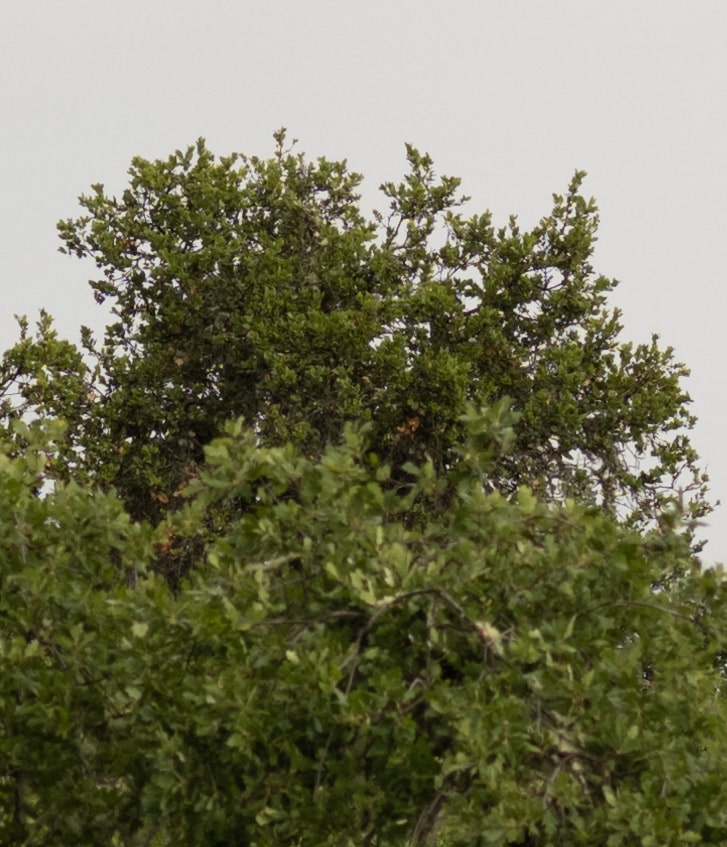
And here’s an image focused on the front tree with an 18 um CoC that the DOF calculators say is right for its 55 meter distance.
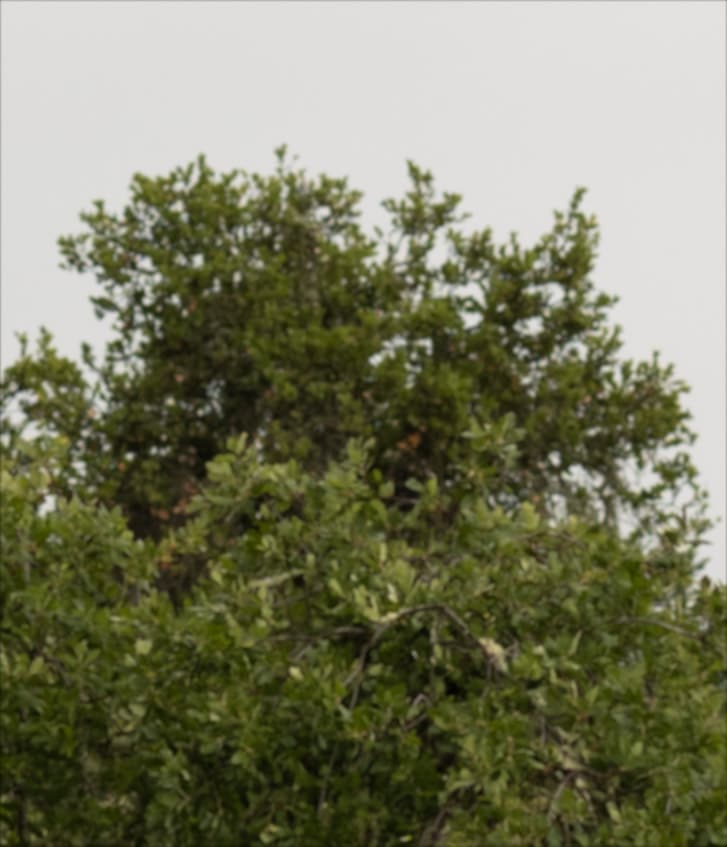
The front tree is bit too blurry.
Let’s try 13 um for a CoC diameter:
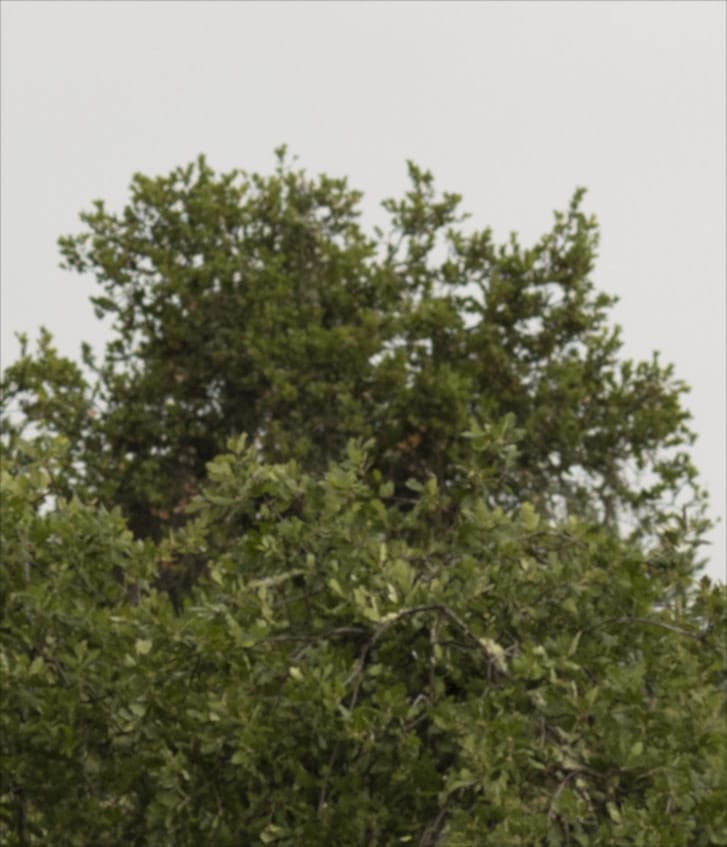
That’s better. The real lens has a bit more DOF than geometric optics says it should have.
Focusing on the front tree is next.
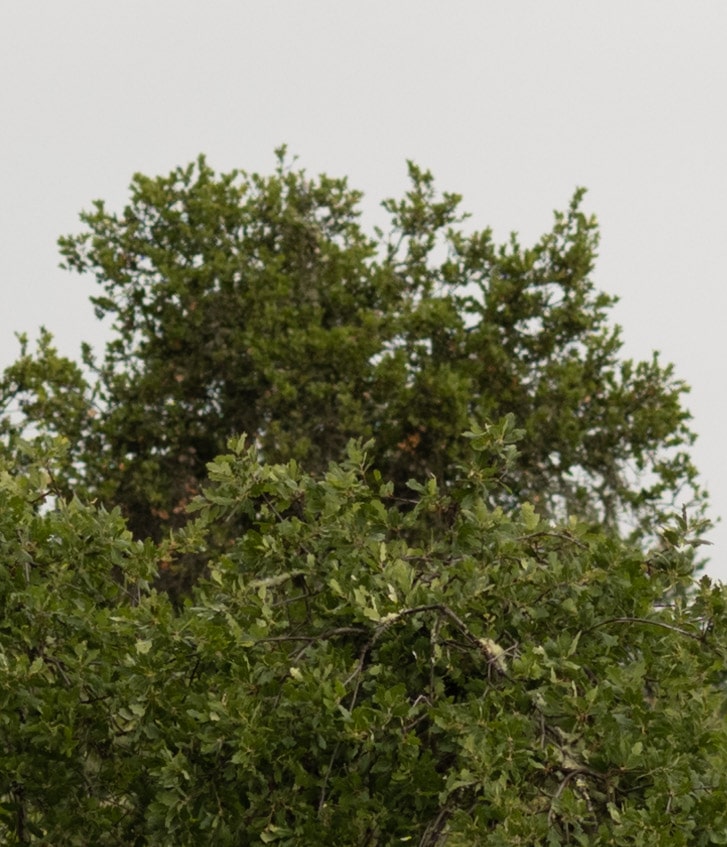
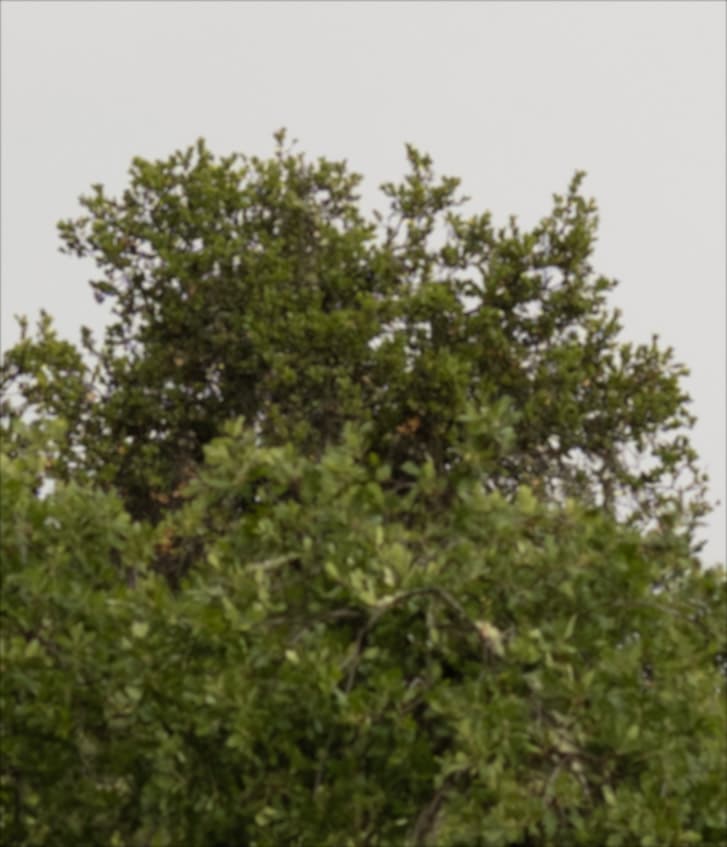
18 um is too blurry again to emulate the real blur on the back tree.
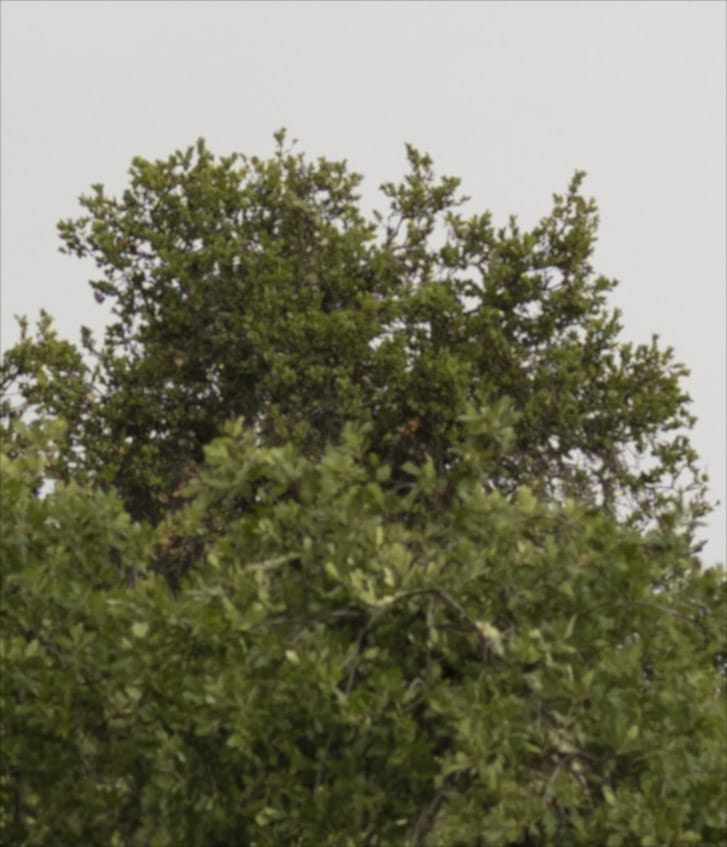
13 um is about right.
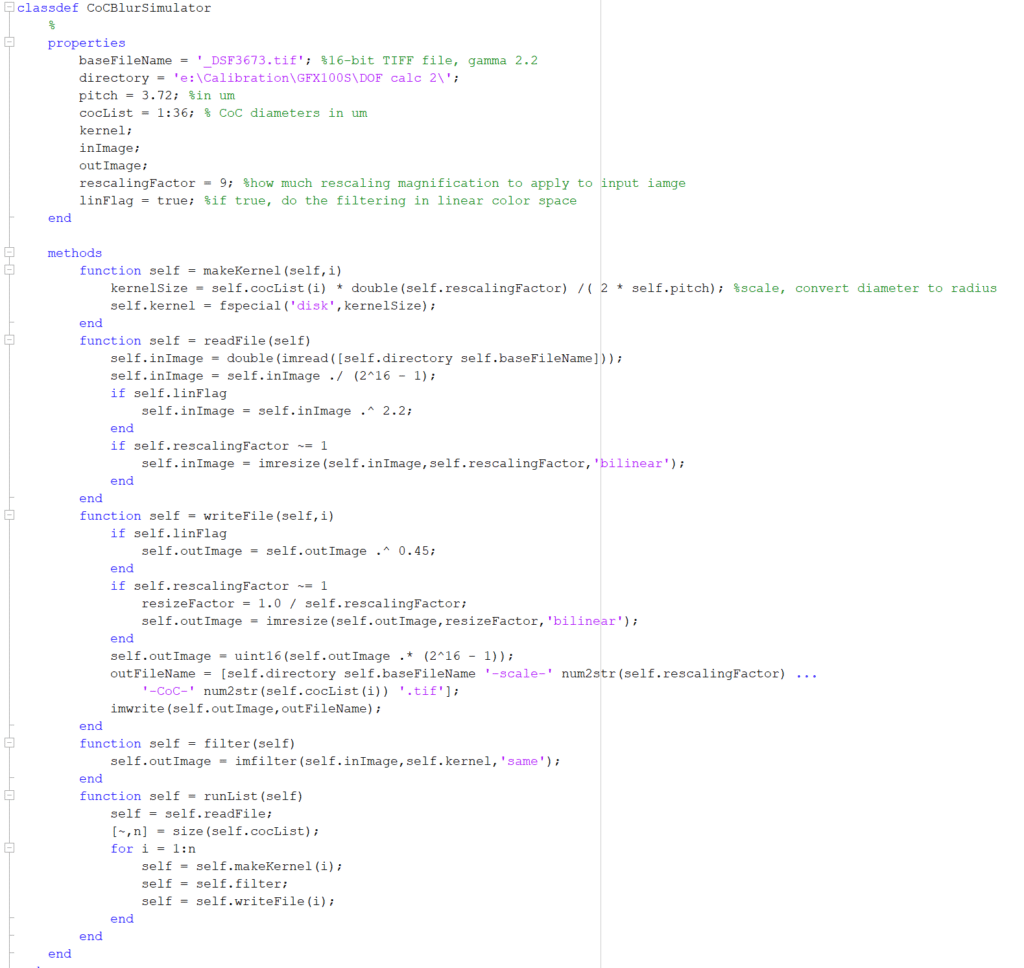
Federico says
I find this two articles interesting, but it’s not very informative as the lens in question is highly corrected. When Nasse mentions the DOF calculator my be misleading, it’s not in the presence of lenses like this, but in comparison to lenses that much a good dose of the things Nasse mentions, in the right proportion and for the right kind of subject (say Portraits). Then, the calculator fails. This is especially true in the vecinity of the focus plane (not a lot of defocus) where a lens with significant LoCA, and undercorrected net spherical of certain kinds (combining negative and positive of different orders) which give a certain “shape” to the DOF progression, make it so that the DOF can be really very different from one lens to another.
In practice, informally, with some lenses I can shoot two to three faster apertures than a very well corrected macro lens, and achieve a similar impression of sharpness where it matters (say, the person’s head). Of course, as the required DOF increases (instead of being contained to narrower depth), things start to approximate the calculator.
This factors matter anytime light is scarce, and the subject may not be still, and the camera may not be still. There’s a lens that can be a much lower contrast and with some generally undesirable aberrations (for 2D target tests) will do a much better job.
The limitation of thinking in general terms of a flat MTF, and then in terms of a DOF calculator, is that if one was to follow this, one would then choose the worst lens for the job, and then the caculator would “work”…but that’s not the lens that should have been chosen, and the calculator should have not been used, but a much faster aperture.
JimK says
The 80 mm f/1.7 is poorly corrected for LoCA.